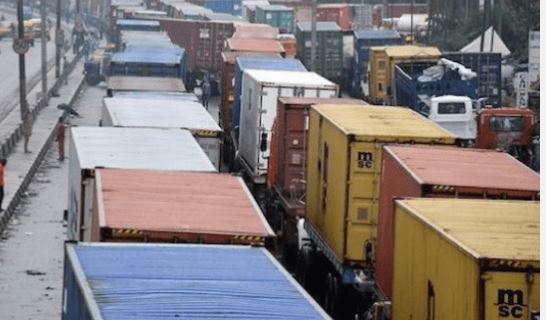The maritime landscape at Lagos port has witnessed a notable upswing in vessel activity over the past week, defying the prevailing economic headwinds, including fluctuating exchange rates and operational hurdles. Data gleaned from the Nigerian Ports Authority’s Daily Shipping Position, spanning from March to the present, paints a picture of bustling maritime traffic, with a diverse array of vessels carrying a wide spectrum of cargo, from essential commodities like wheat and aviation fuel to consumer goods such as used vehicles, making their way to the port. This resurgence in activity signals a potentially positive trend for the port and the broader Nigerian economy.
A detailed examination of the shipping records reveals a consistent flow of vessels docking at Lagos port throughout the specified period. On March 29th, the vessel “Bold Mariner” delivered a substantial shipment of 20,000 metric tonnes of bulk sugar, underscoring the port’s role in handling large-scale commodity imports. Just a few days later, on April 1st, a separate vessel arrived carrying 21,000 metric tonnes of Jet A1 Automatic Gasoline Oil, highlighting the port’s importance in ensuring the nation’s fuel supply. Further solidifying this trend, the Grimaldi Shipping Line brought in a consignment of 500 used vehicles on April 7th, catering to the demand for automobiles in the local market. These consistent arrivals demonstrate the port’s ability to handle a variety of cargo types, contributing to the overall economic activity.
The influx of vessels continued with the arrival of “Jin Rong” on March 22nd carrying 41,111 metric tonnes of general cargo, further showcasing the port’s versatility in handling diverse shipments. Shortly thereafter, on April 1st, the vessel “Heartlau” docked with 14,299 metric tonnes of bulk wheat, a crucial staple in the Nigerian diet, emphasizing the port’s significance in food security. These arrivals, along with the berthing of Ocean Network Express on March 31st with containers, contribute to the overall vibrancy of the port and its role in facilitating international trade.
Beyond the specific examples, the data reveals a broader trend of increased activity across various terminals within Lagos port. Terminals such as ENL experienced a surge in bulk cargo shipments, including essential goods like bulk wheat, frozen foods, and general cargo, throughout the latter part of March. This heightened activity indicates a robust flow of goods through the port, despite the acknowledged operational challenges, and further reinforces the importance of Lagos port as a key gateway for international trade.
However, the picture isn’t entirely uniform across all areas of the port. While some terminals experienced high activity levels, others exhibited some degree of vacancy. The report notes that five berths remained unoccupied at ENL, suggesting potential capacity for even further growth in vessel traffic. This disparity in occupancy rates across different terminals highlights the dynamic nature of port operations and underscores the need for efficient management and resource allocation to maximize overall port productivity.
In summary, the past few weeks have witnessed a significant surge in vessel activity at Lagos port, with approximately 28 vessels calling at various ports and terminals across the country between March and the present day. This increased activity, observed across a variety of cargo types and terminals, signals a positive trend for the Nigerian maritime sector despite existing economic and operational challenges. While some areas of the port show signs of untapped capacity, the overall picture suggests a resilient and active port contributing significantly to the nation’s economy. This influx of vessels and the diverse nature of their cargo underscore the vital role that Lagos port plays in facilitating international trade and supporting the Nigerian economy.














